MEB Science Day 2024: Human centric approaches to improve the success of oncology therapies
The MEB Science Day 2024 took place in the Princess Máxima Center for Pediatric Oncology in Utrecht on 16 April 2024 and focused on human centric approaches in oncology. This topic plays an important role in the development of many new medicines. For example, the majority of approved medicines now consist of cancer medicines. And more new developments are on their way.
During the MEB Science Day, we discussed ways to optimize the development of more targeted therapies and the generation of evidence throughout the life cycle of oncology medicines. Multiple speakers, both from regulatory bodies and clinical practice, spoke about the future of oncology medicines.

Oncology
Prof. Eric Boersma, chair of the MEB’s Science Committee, co-chaired the Science Day. After his opening comments, Esther Broekman took the stage. Esther is a clinical assessor at the MEB and also works as a medical oncologist at the University Medical Center Groningen (UMCG). She introduced the topic of the day. Esther started off by posing a question to the audience: “Why oncology?”.
Among the answers to this question was a high unmet medical need when it comes to oncology medicines. “Right now oncology is the field with the largest impact from a clinical, societal, regulatory and industrial perspective. This field stands at the forefront of development and regulatory issues. It also has a large societal impact,” Esther states.
Esther also mentions the difficulty that lies within explaining the uncertainties about the benefits and risks of cancer medicines, to patients. “Shared decision making is one way to deal with these uncertainties,” Esther explains. “Sometimes, if I have patients that are really well informed, I use simple terms and explain them the pros and cons of the medicine. Sometimes, if people are less informed, I make the decision or insinuate what my educated guess is. But we always have to be transparent about efficacy.”
Esther also proposed a couple of solutions to today’s cancer medicine issues. Some of these solutions included:, collaboration in regulatory science, post-marketing treatment optimisation and research into predictive biomarkers. That last one brings us to the next keynote.
Organoids and regulatory perspectives on organ-on-chip models
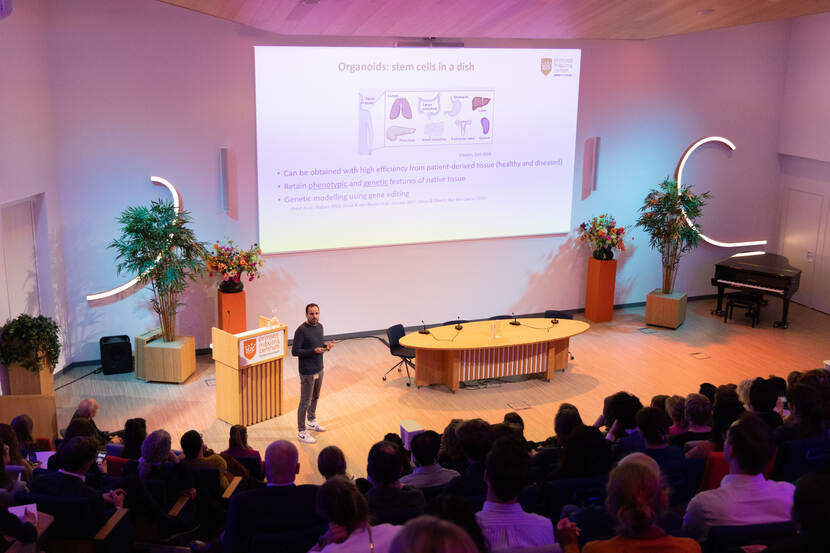
After Esther’s introductory keynote Jarno Drost took the stage. Jarno is group leader at Princess Máxima Center for Pediatric Onclogy and an Oncode Investigator. In his keynote he introduced us to organoids. Jarno started off by explaining today’s issues to us: “The problem is that we need better preclinical cancer models. Cancer is a very heterogeneous disease, so every tumor and every cell is different. Yet we give al the patients the same treatment.” Therefore, Jarno stated that we need patient-specific preclinical models. “Organoid models can be the answer here.”
Organoids are artificially grown miniature organs, grown from stem cells. They can be used to examine molecular processes in tumors, in a patient specific manner. Jarno explained to us that organoids can be obtained from patient-derived tissue with high efficiency. This ensures that the organoids retains phenotypic and genetic features of the native tissue. Which is why they can be used for the development of individualized therapies.
After Jarno introduced us to the topic of organoids, Sonja Beken - coordinator of the Unit of non-clinical evaluators at the Belgian Federal Agency for Medicines and Health Products (FAMHP) and chair of the 3R Working Party of the European Medicines Agency – brought us up to speed on the regulatory perspective on organ-on-chip models. Organ-on-chip models are microfluidic cell cultures, integrated in a chip. They simulate the activities, mechanics and physiological response of an organ or organ system. So while organoids and organ-on-chip models are not the same, they do hold a similar purpose: to facilitate more patient-centric treatments.
Sonja explained that the regulatory bodies hold a proactive approach towards novel technologies, such as organ-on-chip models. “Engagement and open dialogue with interested stakeholders is key here.”
PhD posters
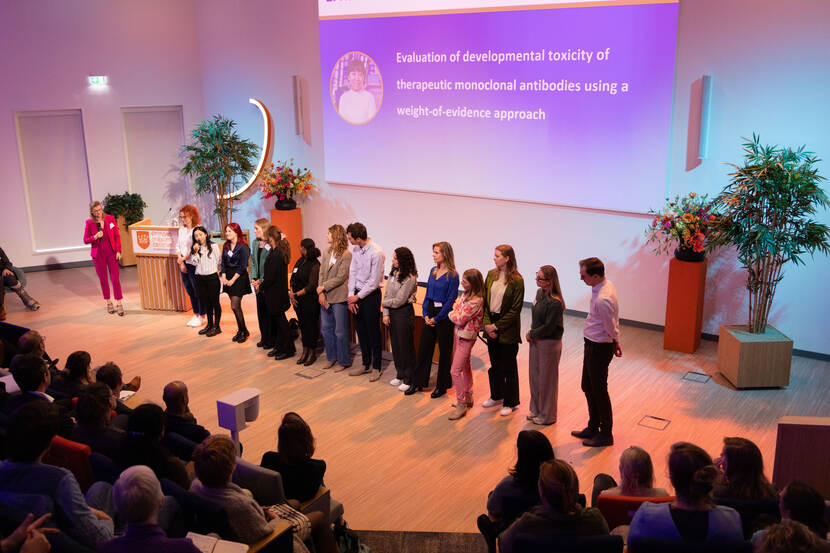
In addition to the oncology presentations, there was also plenty of room for PhD research. No less than thirteen PhD students and one master student, whom are conducting their research at the MEB, gave short one minute pitches to the audience. Visitors were also given the opportunity to catch up on the various studies using scientific posters. There was also ample opportunity during the poster session to ask the PhD students questions about their research.
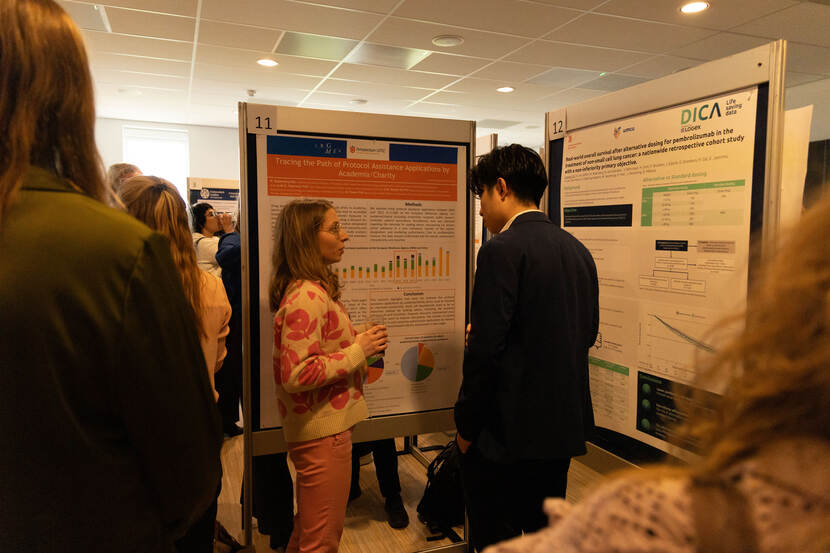
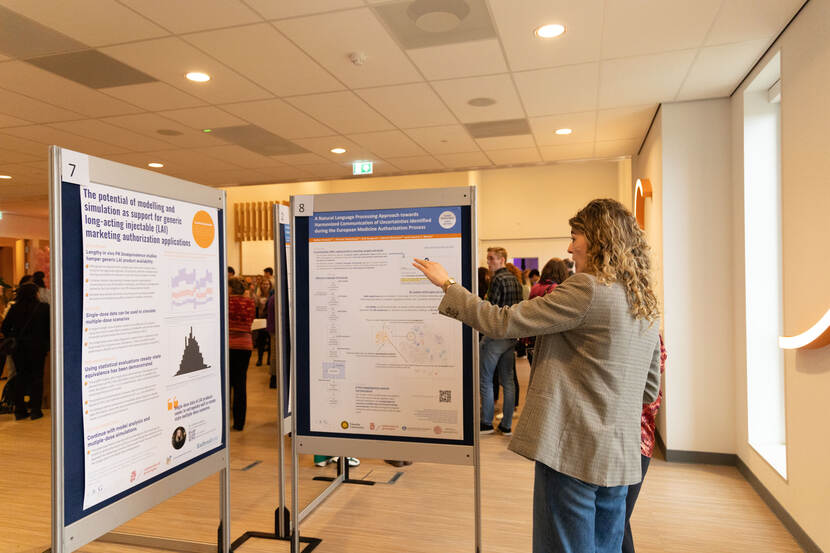
Bioinformatics and real-world data
After the PhD poster break Patrick Kemmeren took the stage. He is group leader and head of Big Data Core at the Princess Máxima Center and Associate Professor at the Center for Molecular Medicine. He kicked off this session with a presentation on bioinformatics. “The biobank allows us to collect materials and data to characterize the DNA of tumors and measure cell activity.” This helps to bring more understanding of how cancer develops and how we can use this type of data for treatment in pediatric oncology.
The biobank aims to create a uniform and unique set of data that has already been used for several pediatric cancer research projects and continues to be a valuable source of data and information.
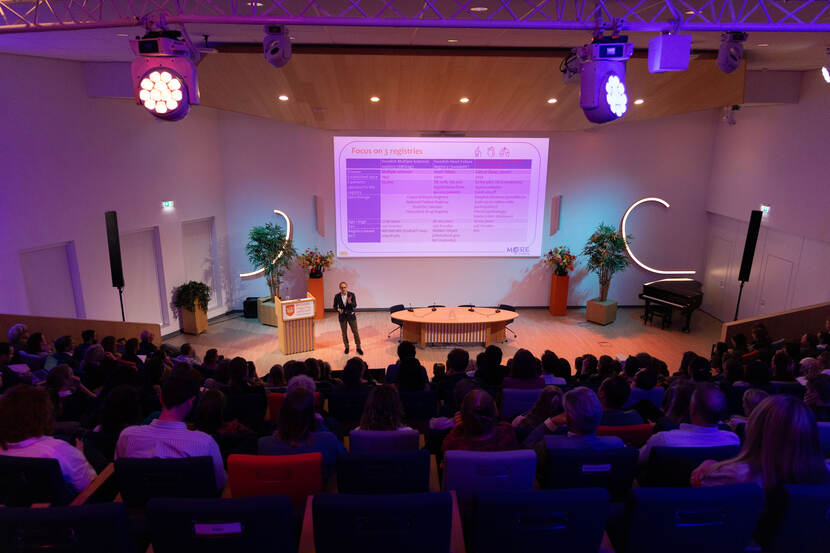
Another valuable source of data is real-world-data, which brings us to the next keynote speaker. Peter Mol, Professor of drug regulatory science at UMCG and CHMP member at the European Medicines Agency (EMA), taught us about the use of real-world data in regulatory decision making.
Real-world data is data that is collected, for example, as part of providing care or in the daily lives of patients. Peter explained to us how real-world data is a valuable addition to research, but that it will not replace clinical data in regulatory decision making. Peter: “A structured approach of presenting real-world data in applications and assessment reports could facilitate monitoring its use in future procedures to enable further establishing its impact on regulatory decision making.”
Dose optimization
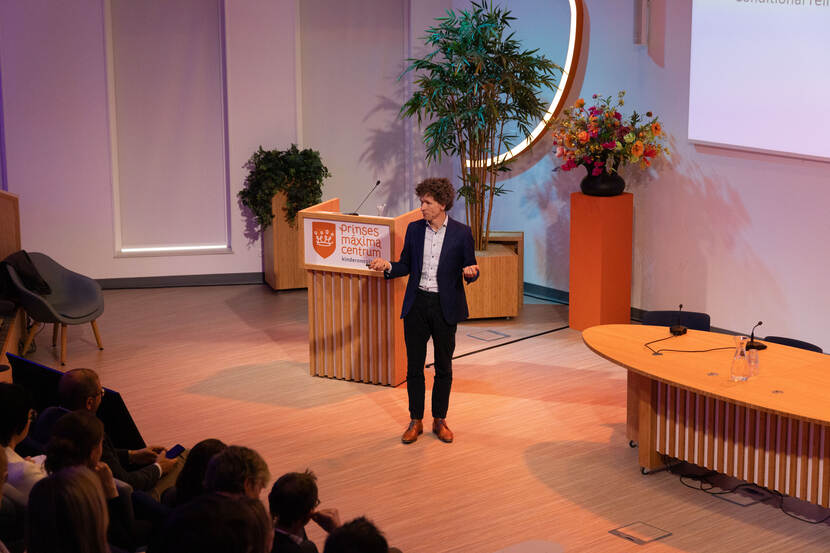
The final speaker of the day, Gabe Sonke, medical oncologist at the Antoni van Leeuwenhoek hospital and board member at the MEB, addressed the subject of effectiveness in use of oncology medicines. “Patients want timely access to new cancer therapies, but they expect investigators to identify therapies that offer real benefits.” Gabe says. “This puts us in a difficult position, because we want speed on one side and robust outcome data on the other, and those two do not always go hand in hand.”
Gabe takes us along in one of his own research trials, the SONIA study, in which he investigated dose optimization in breast cancer patients. “The incentive of drug companies will not be there to test dose optimization. Self-funded trials can fill this gap in the post-approval setting,” he concludes.
Panel discussion and recap
At the end of the day, chair Dr. Marjon Pasmooij, head of the MEB Science department and Associate Professor of drug regulatory science at Utrecht University , led the panel discussion featuring Patrick Kemmeren, Peter Mol and Gabe Sonke. All participants concluded that patients should be at the center of research. The various keynote speakers advocated looking at treatments more from the patient’s perspective. “The interaction between research and care is getting more close.” Patrick says. “That is where many possibilities and opportunities lie. But it also poses many questions.”

Annemiek Walenkamp, medical oncologist at the University Medical Center Groningen and MEB board member, wrapped up the day with some reflections. “We’ve seen and heard a lot about the use of new technologies today,” She says. “We have to learn more about how these new technologies work and come in to play.” She concluded her wrap up with a look towards the future: “The work we do is for patients. Therefore, we have to collaborate with patients. That’s the way to move forward, with patient-centered care.”
All in all, the MEB Science Day 2024 was an inspiring day on the future of oncology medicines.